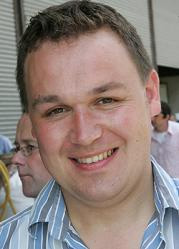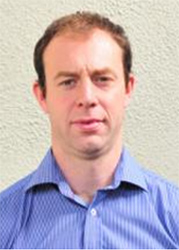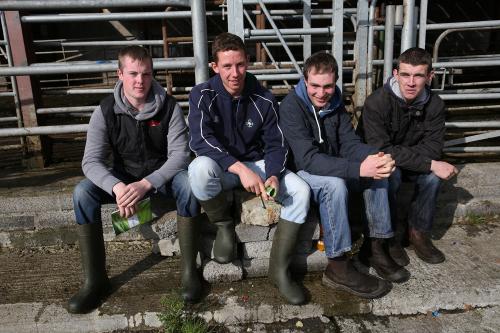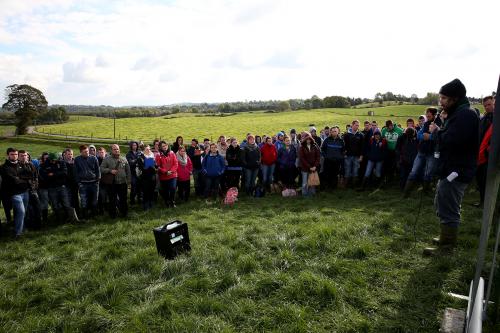The Irish Grassland Association was founded in 1946 by a group of like minded individuals who saw a need to advance and spread the knowledge of modern grassland management in Irish farming.
Since its foundation, the Irish Grassland Association (IGA) have worked alongside the most progressive individuals in the farming, research, advisory and agri-industry sectors for the betterment of Irish grassland farming. This relationship has been significant in bringing Irish grassland technology to the forefront as an international science.
The Irish Grassland Association awards student bursaries to support travel to conferences or events deemed to be of benefit to students undertaking postgraduate studies in grassland or grass-based livestock systems research in Ireland. A maximum of two bursaries of up to €500 each will be available in 2015.
Application procedure
Applications are invited from members and non-members of the Irish Grassland Association and must be received at least two months prior to the money being required. Interested persons can apply for the bursary by completing the attached application form.
The successful applicant(s) will be notified within one month of the closing date. The successful applicant(s) will be required to provide a written report for the Irish Grassland Association Council which will be published in the Association’s Newsletter.
Applications can be submitted to: secretary@irishgrassland.com with the subject line ‘IGA bursary application’.
Closing date for applications is 5 pm on Wednesday 1st April 2015.
Sponsored by FBD Trust
Adam Woods and Donal Patton, Teagasc and Irish Grassland Association Council


Adam Woods and Donal Patton
The 2014 Irish Grassland Association annual student conference was held on the Cavan/ Meath border to the dairy farm of Owen Brodie, Ryefield House, Virginia, Co. Cavan and the beef farm of Tom Halpin, Robertstown, Carlanstown,Kells Co. Meath. 265 students from UCD, Dundalk IT, Teagasc Kildalton, Teagasc Ballyhaise and Waterford IT and Teagasc, Clonakilty attended this year’s event. Conference attendees were split in two groups, one visiting a dairy farm and the other visiting a beef farm. This year’s conference had a forum at the end of the farm tours where students took part in a discussion about opportunities for both dairy and beef farmers in a post quota era.

This conference is unique in that it is the only conference which specifically caters for students in the country and it affords these students the chance to see hands on efficient, well run commercial beef and dairy farms. Students also get the opportunity to go into detail with the host farmers about the nuts and bolts of their business.
Organisers would like to sincerely thank to FBD Trust for their continued support for this conference.

Beef Farm Walk – Tom Halpin and family
The beef venue this year was Tom Halpin and his family who farm at Carlanstown just outside Kells, Co. Meath. Tom is a participant in the Teagasc/Irish Farmers Journal BETTER farm beef programme and the farm has undergone a good deal of development since joining this programme. Tom farms 63 ha of mainly free draining land and operates a 90 cow suckling to store system calving cows in both autumn and spring. Recently he sold his mid-season ewe flock to concentrate on the beef end of the business and has increased cow numbers accordingly over the past few years. His cow type is predominantly a Limosuin/Simmental cross cow which is then crossed with a terminal sire Charolais bull. Tom has been very open to change since joining the programme and has made a lot of progress especially in the area of grassland management.
Farm Overview
The first stop on the day was the farm overview. Tom attended Warrenstown agricultural college and then began farming alongside his father. Tom also outlined the financial progress he has made since joining the BETTER farm beef programme. Gross margin has increased from €575/ha in 2011 to €767/ha in 2013 as a result of ceasing to rent con-acre, increasing stocking rate on the owned land and increasing sales and output. Tom explained his reasons for exiting sheep production, while he enjoyed working with sheep he felt that he would like to concentrate on the cow enterprise as he has spent a long time building up the genetics of the cow herd and is something that cannot be done quickly in the future. Sheep on the other hand can be purchased quite quickly at autumn hogget sales and you are back into production in 5-6 months.
Grassland Management
Tom has quite a dry farm; however, turnout dates in the spring had been quite late with cows going out in mid-April. One of the key focuses of the BETTER farm beef programme was to lengthen the number of days at grass on the farm and also install paddocks and drinkers to split larger fields to ease management of grass during peak growing times and increase the quality of the grass being offered to animals during the year. Tom explained to the students that with the help of his local Teagasc advisor, Ned Heffernan, they mapped out where the divisions were to be put and where the drinkers where to be placed in the larger fields. Tom says that this has really helped him manage his grass better and because he can close up in rotation in the autumn time he is now turning out stock in early March as opposed to mid-April. He is also measuring grass each week and simply calculating supply and demand of grass on the farm to enable him to take corrective action.
Breeding
Tom places a lot of focus on getting the right genetics on the farm to produce the type of animal that he wants to sell at the end of the year. Since joining the BETTER farm beef programme he has purchased two new stock bulls, one a Limousin by the famous Ronnick Hawk, which is used to breed replacements on the farm, and the other a terminal sire Charolais bull, which is used on all cows producing progeny for sale. Tom paid special attention to the calving difficulty score of each of the bulls as he says he is a one man operation and he cannot afford difficult calvings on the farm. This costs him time and money, not to mention the stress of going through a series of difficult of calvings. Tom is split calving which means he needs to be very disciplined on his breeding dates. Students on the day questioned Tom about why he does not just have spring calving. In his response Tom reverted back to the labour issue and calving 90 cows in 12 weeks would be a big drain on one person. Facilities would also need to be built if he chose this option.
Key Profit Drivers
Tom listed his Key Profit Drivers for his farm:
o Perennial ryegrass swards, paddock system, rotational grazing and silage quality
o Age at first calving, calving rates and longevity
o Excellent weaning weights
o Quality of feed, stockmanship, genetics and health
Dairy Farm walk – Owen Brodie
The dairy farm walk was held on Owen Brodie’s farm where students were given an opportunity to see a large scale spring calving system in operation. Owen outlined the history of the farm and how it has progressed since he bought it in 1989. He explained that because the farm was bought this enforced immediate financial pressure and he had to focus on his costs of production and also prioritise his capital spending. By the mid-1990’s he was milking 100 cows in a split calving system but he decided to focus entirely on spring milk production to reduce his cost base. Owen said that joining a discussion group was a major turning point as it helped him to focus on the really important aspects of his business – growing and utilising more grass, improving genetics and breeding management to achieve a tight calving pattern and good financial discipline. This focus has helped Owen to grow his business within a period where many others stayed static; he is currently milking 180 cows on a 59 ha block and all replacements are contract reared. Owen expressed his envy of the students present and told them he would love to be starting his farming carrier in a no quota environment where he believes many opportunities will become available for those brave enough to grasp them. He did however urge caution citing milk price volatility as a major risk especially during expansion phase.
Breeding
Owen’s ideal cow is a medium sized cow capable of producing high levels of milk solids from a grazed grass diet and achieving a 365 day calving interval. Owen’s herd EBI is €173 with a strong emphasis on fertility sub-index (€92). From 1997 to 2009 he used mainly NZ Friesian sires and since 2009 he has been using Jersey to achieve his breeding goals. The fact that his breeding policy has been strongly weighted towards fertility over the years has given Owen a strong base to work from, his calving interval last year 357 days and he calved 50% of the herd in 26 days. This consistently impressive fertility performance allows Owen to produce high levels of milk solids from grass (1100 kg MS/ha) while also presenting opportunities to expand because large numbers of surplus replacments are produced each year. When asked if he intends to continue to use Jersey AI he said ‘I am very happy with the crossbred cows but I will only use more Jersey if we can source individual bulls of comparable quality to the Frisians.’ He pointed out to the younger generation that the tools and information available today is light years ahead of what it was when he started farming.
Grassland Management
One of Owen’s core principles of his production system is to produce high levels of milk solids from grazed grass. This high level of production is driven by a long grazing season which starts in mid-February and continues until late November. Supplementary feeds are kept to a minimum during the grazing season and are only used during grass deficits which are identified during the year by measuring and budgeting. Owen outlined to students that without good grazing infrastructure achieving 280 days at grass is impossible even on the driest of farms. Owen has improved his winter facilities however stated to students that this wasn’t top priority in the early years of expansion. During the early years he prioritised investment in roadways, reseeding and soil fertility.
Summary
The main message from the day was to invest both time and capital in the areas which will yield the best return, grass, genetics and labour management. As farms expand the division of labour will become increasingly important and Owen’s advice was to contract out as much of the machinery work as possible and concentrate on cows and grass. He also pointed out that as a farm business expands the farmer will spend less of their time dealing with cows and more of their time dealing with people, you have to learn how to get on with these people, this will come natural to some but will require effort for others.

Opportunities post quota for dairy and beef farmers
The discussion in the afternoon centred on the opportunities that the removal of milk quota will provide to both dairy and beef farmers. The opportunity for existing dairy farmers to expand is quite obvious and considerable scope exists on the average dairy farm where the stocking rate is low at 1.8 cows/ha and output per cow is also low at 350 kg MS/cow. This equates to 630 kg MS/ha which is about half the output achieved by the host farm, therefore MS output could potentially be doubled on the existing land base. In order to achieve this high level of output per ha replacement stock will need to be moved off the milking block and replaced with extra milking cows. This provides an attractive option for beef farmers to contract rear the young stock. Two members of Owen’s discussion group, Ger Smith from Virginia and PJ Nangle from Slane, attended this session and contributed to the debate. The lads explained that quite a few of the group members have gone the contract rearing route which has allowed them carry more cows on the home block and also frees up more time for them to concentrate on the core principles of profitable milk production. Even though contract rearing arrangements can be altered to suit both parties a few basic principles should be adhered to:
While contract rearing seems the obvious opportunity, other ideas on the day were discussed which included producing fodder for dairy farms, fattening cull cows on contract and rearing the bull calves from the increased number of dairy cows. Opportunities were also discussed about breeding replacements for the dairy herd where issues around gestation length and type of bull used were discussed. The clear message on the day was that both dairy and dairy need to re-appraise their current systems and ask themselves the question are their new opportunities for their own farming system to become more sustainable.